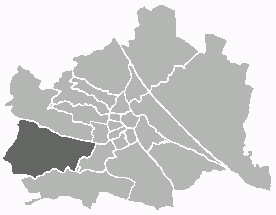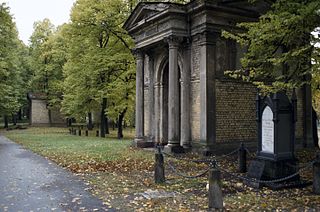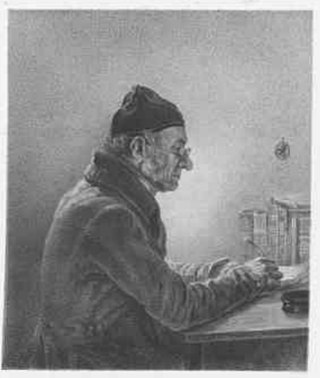
Landstraße is the 3rd municipal district of Vienna, Austria. It is near the center of Vienna and was established in the 19th century. Landstraße is a heavily populated urban area with many workers and residential homes. It has 89,834 inhabitants in an area of 7.42 km2. It has existed since about 1200 AD. In 1192, the English king Richard the Lionheart was captured in the Erdberg neighbourhood, after the unsuccessful Third Crusade.

Meidling is the 12th district of Vienna. It is located just southwest of the central districts, south of the River Wien, west of the Gürtel belt, and east and southeast of Schönbrunn Palace. Meidling is a heavily populated urban area with many residential buildings, but also large recreational areas and parks. In sports, it is represented by the FC Dynamo Meidling. Former Chancellor of Austria Sebastian Kurz was born and raised in Meidling and his private residence is there.

Mariahilf is the 6th municipal district of Vienna, Austria. It is near the center of Vienna and was established as a district in 1850. Mariahilf is a heavily populated urban area with many residential buildings. It has a population of 31,621 within an area of 1.48 square kilometres (0.6 sq mi).

Hietzing is the 13th municipal District of Vienna. It is located west of the central districts, west of Meidling. Hietzing is a heavily populated urban area with many residential buildings, but also contains large areas of the Vienna Woods, along with Schönbrunn Palace.

Oakland Cemetery is one of the largest cemetery green spaces in Atlanta, Georgia, U.S. Founded as Atlanta Cemetery in 1850 on six acres (2.4 hectares) of land southeast of the city, it was renamed in 1872 to reflect the large number of oak and magnolia trees growing in the area. By that time, the city had grown and the cemetery had enlarged correspondingly to the current 48 acres (190,000 m2). Since then, Atlanta has continued to expand so that the cemetery is now located in the center of the city. Oakland is an excellent example of a Victorian-style cemetery, and reflects the "garden cemetery" movement started and exemplified by Mount Auburn Cemetery in Massachusetts.

Heiligenstadt was an independent municipality until 1892 and is today a part of Döbling, the 19th district of Vienna, Austria.

St. Marx Cemetery is a cemetery in the Landstraße district of Vienna, used from 1784 until 1874. It contains the unmarked grave of the famous composer Wolfgang Amadeus Mozart.

Vienna City Hall is the seat of local government of Vienna, located on the Rathausplatz in the Innere Stadt district. Constructed from 1872 to 1883 in a neo-Gothic style according to plans designed by Friedrich von Schmidt, it houses the office of the Mayor of Vienna, as well as the chambers of the city council and Vienna Landtag diet.

Grinzing was an independent municipality until 1892 and is today a part of Döbling, the 19th district of Vienna.

The Jewish Cemetery in Währing, opened in 1784, was the main burial site for members of the Israelitische Kultusgemeinde Wien. Besides the St. Marx Cemetery it is the last remaining cemetery of Vienna in the Biedermeier style. After its closure in the 1880s, it was partially destroyed during the time of the Third Reich, and is now only partly accessible due to its deteriorating condition. A long-running debate over the restoration of the cemetery has been taking place since 2006 between politicians of the federal and local levels as well as experts.

The Great Cemetery was formerly the principal cemetery of Riga in Latvia, established in 1773. It was the main burial ground of the Baltic Germans in Latvia.

The Jewish cemetery in Roßau, which is also known at the Seegasse Jewish cemetery because of its location in the Seegasse, is the oldest preserved cemetery in Vienna. Members of the city's Jewish community were buried here between 1540 and 1783.

The Döbling Cemetery is a cemetery in the 19th district of Döbling in Vienna, Austria.

Josef Danhauser was an Austrian painter and one of the prominent artists of Biedermeier period, along with Ferdinand Georg Waldmüller, Peter Fendi, and others. Danhauser's works, which went largely unappreciated in his time, dealt with moralising subjects and had a clear influence of William Hogarth.

Hundsturm was an independent municipality (Gemeinde) of Austria until 1850 and is today a suburb of Vienna the city's 5th District, Margareten.

Heiligenstädter Friedhof is a cemetery in Döbling, the 19th district of Vienna, Austria.

Matzleinsdorf Protestant Cemetery is a historic church-owned and operated Protestant cemetery located in the Favoriten district of Vienna, the capital city of Austria.

Jakob Gauermann was a German landscape and genre painter and engraver born in Oeffingen, near Stuttgart.

The Deckergasse is a narrow lane, in the Meidling district of Vienna, Austria, stretching from the Assmayergasse in the west to the Längenfeldgasse in the east.

Feuerhalle Simmering is a crematorium with attached urn burial ground in the Simmering district of Vienna, Austria. It lies at the end of an alley, directly opposite Vienna Central Cemetery's main gate.



























